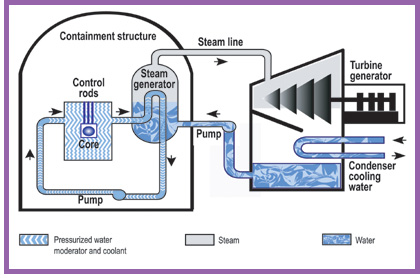Coal:
Other than the thing Santa may put in your stocking if you are naughty, coal is a resource found in most countries and mined to create electricity.
Coal fired power plants contribute to about 41 % of global electricity
in the U.S we use about 45% coal for electricity so it is vital to our energy sources
How does coal become electricity?
thermal coal is what is used to generate electricity:
After it is harvested from deposits and transferred to a power station the coal is ground up into fine pieces so it will burn faster and there is more of it. Next the coal is boiled or burnt at high temperatures. This process creates hot gasses and heat or thermal energy, this is then converted to water. Then after purification it is converted again back to steam. The steam is pushed at high pressures through a turbine connected to a generator. When both the turbine and generator are working fast, electricity is generated. high voltages are transferred via power line grids and made consumable for use.
As you can see this process described above can be seen here.
Next is Natural Gas:
Natural gas is a fossil fuel and comes from the decay of plants and animals when layers of plants and animals are exposed to high temperatures and pressure, similar to a landfill. after about 1,000 years of this process, carbon is formed and harvested for storage. wells are drilled into the ground to remove gas Ex. Fracking. After being harvested, it is transported to be purified of gasses like helium, hydrocarbons, moisture and more.
Power plants use three methods of converting gas to electricity
1. similar to coal production, the gas is heated in a boiler room to produce steam which powers a turbine to generate electricity.
2.the most common approach is natural gas is combusted to make electricity enabling it to be store and transformed into usable power using a combustion turbine. Bellow is a image of that process.
3.The third method is called the combined cycle which takes the hot combustion turbines exhaust used in the second approach to then make steam to drive a steam turbine, and creates a higher efficiency.
Nuclear:
provides 12% of the worlds electricity
Nuclear plants much like coal and gas which we have just looked at harvest a product out of the earth then boils it to make steam which drives a turbine generator.
nuclear uses uranium, an isotope which atoms are split.
the nuclear reactor itself is where nuclear power differs from coal and natural gas, thousands of small pellets of uranium oxide fuel makes up the core of the reactor. In the core the uranium splits creating heat and a chain reaction. A moderator like graphite or water, slows down the neutrons so that the power doesn’t get to high and combust.
for the most part water is recycled durring this process but due to the radioactive decay durring the process is the main waist from making energy this way.
all three of these methods have a risk to it,
natural gases emit carbon dioxide, but less than the emission of carbon dioxide from the coal burning process.
the use of water in all three of these processes is a major concern, in all three the water is re used but only to an extent many times water can still reach and pollute rivers and lakes even drinking water.
The biggest concern with natural gas is its inability to be renewed in our life time, while the coal supply is also running out, nuclear power is overall reusable. Because of its efficiency is recycling water and the chain reaction used. The main concern for nuclear plants is radiation, to some much scarier and devastating than water or air pollution.
despite these and many more concerns about all the processes, each are making an effort to become more efficient and safe
nuclear is working on assuring the reactor is controlled and there are no accidents with radiation spillage or explosions due to the intense amount of heat and energy being produced
coal is trying to make the process cleaner for the environment by reducing the release of pollutants
natural gas, which does not produce solid waist is attempting to reduce air emissions and become more renewable
Links:
http://www.worldcoal.org/coal/uses-of-coal/coal-electricity/
http://www.epa.gov/cleanenergy/energy-and-you/affect/natural-gas.html
http://www.world-nuclear.org/nuclear-basics/how-does-a-nuclear-reactor-make-electricity-/


